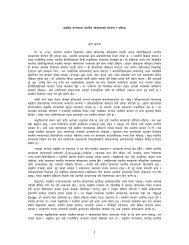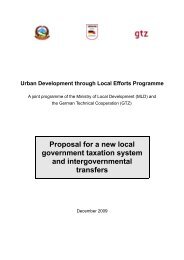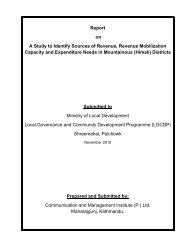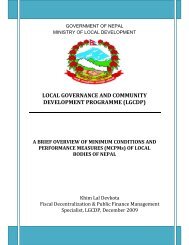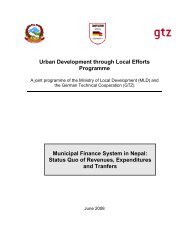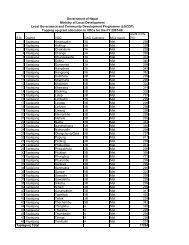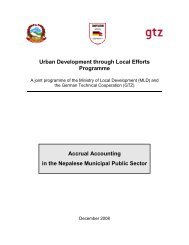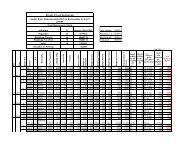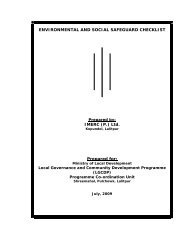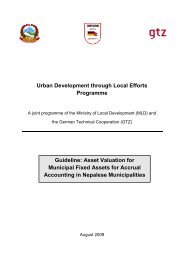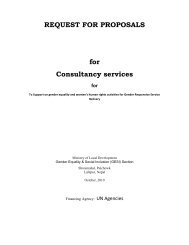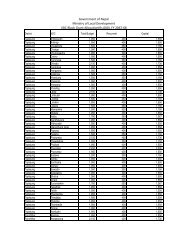LGCDP M&E Framework
LGCDP M&E Framework
LGCDP M&E Framework
Create successful ePaper yourself
Turn your PDF publications into a flip-book with our unique Google optimized e-Paper software.
1.2. PURPOSE<br />
The purpose of <strong>LGCDP</strong> is the "improved access to locally and inclusively prioritised<br />
public goods and services".<br />
Analysis of Outcome formulation:<br />
• One key aspect of the outcome refers to improved access. Access to public goods<br />
and services is improved if citizens need less time to travel to the site where the<br />
service is provided and if the service is delivered in less time.<br />
• Another key aspect of the outcome statement refers to the fact that access is locally<br />
and inclusively prioritised. More in detail, this aspect refers to two concerns:<br />
o<br />
o<br />
“inclusively prioritised”: public goods and services to be provided by the<br />
DDCs, municipalities and VDCs are based on the demand of the local<br />
communities, including women, the poor and the disadvantaged groups<br />
“locally prioritised”: public goods and services to be provided by the DDCs,<br />
municipalities and VDCs are agreed upon by representatives of the groups<br />
from the area (rather than centrally), including women, the poor and the<br />
disadvantaged groups.<br />
• Public goods refers to public infrastructure provided or supported by local<br />
governments and line ministries at the local level. Based on consultations with key<br />
stakeholders, public goods of DDCs and VDCs in the context of <strong>LGCDP</strong> refers mostly<br />
to (ranked according to importance):<br />
1. road (earth roads)<br />
2. drinking water (reservoirs, pipes)<br />
3. education (school buildings, teacher salaries, primary & secondary schools) 1<br />
4. electricity (national grid, micro hydro)<br />
5. health<br />
• Public services in the context of <strong>LGCDP</strong> refers to the timely availability of services<br />
typically provided by DDCs, municipalities and VDCs like legal, registration and<br />
community services (e.g. vital registration, paralegal services, mediation) and social<br />
security (allowances for senior citizens, widows, disabled and single women, etc.).<br />
locally and<br />
inclusively prioritised<br />
access<br />
access to public goods<br />
(especially roads, drinking water, education,<br />
electricity, health)<br />
access to public services (especially legal,<br />
registration and community services as well as<br />
social security)<br />
1 These public goods can also be regarded as a public service.<br />
4



